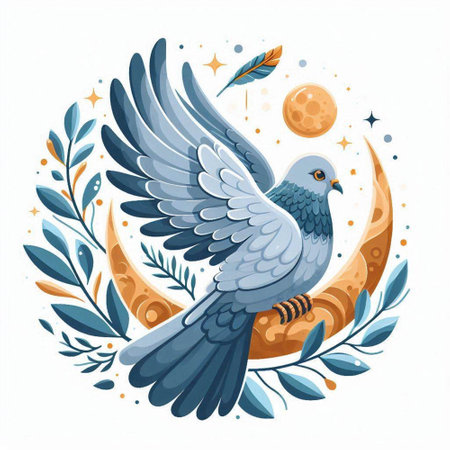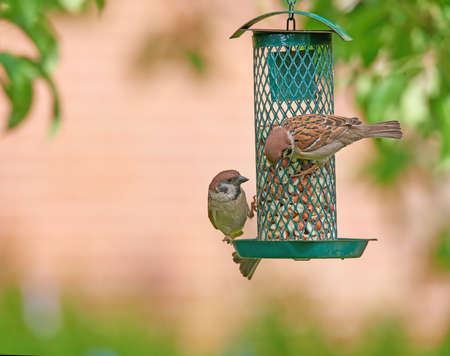Introduction to Bird Watching and Feeding in Britain
Bird watching and feeding are cherished pastimes that occupy a distinctive place in British culture. Across the United Kingdom, these activities have evolved from simple appreciation of wildlife into widespread hobbies enjoyed by people of all ages and backgrounds. Gardens across the nation often feature bird feeders and tables, providing sustenance for native species while allowing enthusiasts to observe avian visitors up close. Bird watching clubs and societies, some dating back centuries, highlight the enduring fascination with Britain’s diverse birdlife. These traditions reflect not only a love of nature but also a deep-rooted sense of stewardship for the environment, exemplifying how observing and supporting wildlife is woven into the fabric of British daily life.
2. Historical Roots and Cultural Significance
The origins of bird watching and feeding in British culture can be traced back to ancient times, reflecting a deep connection between people and their natural surroundings. Early references to birds in British folklore, literature, and even legal documents highlight the longstanding fascination with avian life. In medieval England, birds were not only observed for their beauty but also played important roles in agriculture, symbolism, and superstition. For instance, the arrival of swallows was traditionally seen as a sign of spring and good fortune, while the call of the cuckoo marked the passage of time.
Early References and Practices
Historical records from the 16th and 17th centuries mention bird feeding in manor gardens and rural communities. The practice often involved scattering crumbs or seeds during harsh winters, reflecting both charity and an appreciation for nature’s resilience. Prominent writers such as Gilbert White, whose seminal work “The Natural History of Selborne” (1789) documented local birdlife, played a crucial role in shaping public interest towards ornithology and casual observation.
Role in Traditional British Society
| Period | Activity | Cultural Significance |
|---|---|---|
| Medieval Era | Observation of migratory patterns | Used for agricultural planning and folklore |
| Tudor & Stuart Periods | Feeding birds during winter months | Seen as charitable acts; reinforced community values |
| 18th Century Enlightenment | Systematic recording of bird species | Encouraged scientific curiosity and appreciation for biodiversity |
Enduring Legacy
The historical roots of bird watching and feeding have contributed to their enduring presence in British culture. These practices fostered a sense of stewardship towards wildlife, which remains embedded in contemporary attitudes. From village greens to stately home gardens, the tradition reflects both communal responsibility and personal enjoyment, underscoring its significance within British society throughout the ages.

3. Development Through the Victorian Era
The Victorian era marked a significant turning point in the history of bird watching and feeding within British culture. During this period, there was a notable surge in public interest towards ornithology, fuelled by both scientific curiosity and an increasing emphasis on leisurely pursuits among the burgeoning middle class.
Scientific Curiosity and Ornithology
The 19th century witnessed remarkable advancements in natural sciences, with ornithology emerging as a popular field of study. The publication of works such as John Gould’s illustrated bird books and Charles Darwin’s evolutionary theories inspired a generation of amateur naturalists. These individuals, often members of learned societies or local clubs, began to systematically observe and document Britain’s avian species. Bird watching became not merely a pastime but a respected avenue for scientific contribution, reflecting the Victorian ethos of self-improvement and discovery.
Leisure Activities and Garden Bird Feeding
Alongside formal scientific inquiry, the Victorian period saw garden bird feeding evolve as a genteel leisure activity. The cultivation of ornamental gardens provided an ideal setting for attracting birds, and it became fashionable to offer food such as crumbs, seeds, or suet to visiting species. Illustrated magazines and household manuals published practical advice on how to encourage wild birds into domestic spaces, positioning bird feeding as both an enjoyable pursuit and a demonstration of refined taste.
Cultural Significance
This era’s engagement with bird life extended beyond science into literature and art, where birds frequently symbolised beauty and freedom. The act of observing and caring for garden birds was imbued with moral value, seen as fostering kindness and appreciation for nature.
Legacy for Modern Practices
The Victorian enthusiasm for both scientific ornithology and recreational bird feeding laid the groundwork for contemporary practices in British bird watching culture. Many traditions established during this period—such as keeping bird journals or designing purpose-built feeders—remain integral to the nation’s enduring fascination with its avian wildlife.
4. The Role of British Gardens and Public Spaces
Throughout British history, private gardens, village greens, and urban parks have played a pivotal role in shaping the nation’s relationship with wild birds. These spaces served as both communal gathering points and personal retreats, fostering unique opportunities for observation and feeding that reflect broader social and cultural trends.
Private Gardens: Personal Sanctuaries for Bird Watching
The tradition of cultivating private gardens dates back to the Tudor period but became especially prominent during the Victorian era, when suburban expansion made garden ownership widespread among the middle class. Gardens provided an accessible and intimate setting for individuals to observe avian behaviour and establish routines of bird feeding. These activities not only offered solace and enjoyment but also contributed to amateur ornithology by encouraging careful observation and record-keeping.
Village Greens: Community-Based Engagement
Village greens historically acted as focal points for rural communities, hosting fairs, markets, and social gatherings. They also doubled as shared natural habitats where local residents could collectively engage with wildlife. Informal bird feeding became embedded in the rhythms of village life, reinforcing community bonds through shared stewardship of local bird populations.
Urban Parks: Bridging Nature and City Life
The development of public parks in the 19th century responded to increasing urbanisation and the need for accessible green spaces. Urban parks such as London’s Hyde Park or Edinburgh’s Princes Street Gardens were designed not only for recreation but also as refuges for native and migratory birds. Here, bird watching and feeding transcended class boundaries, becoming popular leisure pursuits among all segments of society.
Comparative Analysis of British Spaces
| Space Type | Main Characteristics | Role in Bird Watching & Feeding | Cultural Significance |
|---|---|---|---|
| Private Gardens | Enclosed, personalised, cultivated | Facilitates individual engagement; supports diverse species through tailored planting/feeding practices | Symbolic of domesticity; encourages citizen science |
| Village Greens | Open, communal, central to rural life | Promotes collective observation/feeding; habitat continuity across generations | Fosters community identity; preserves traditional practices |
| Urban Parks | Larger scale, public access, managed landscapes | Makes birding inclusive; provides refuge for birds amidst cityscape | Democratises nature appreciation; key for environmental education |
The Enduring Legacy of British Green Spaces
The interplay between private gardens, village greens, and urban parks underscores the depth of Britain’s cultural investment in bird watching and feeding. These environments continue to nurture both individual passions and collective traditions, ensuring that wild birds remain an integral part of everyday British life.
5. Societies, Clubs, and Conservation Movements
The British tradition of bird watching and feeding took on a new dimension with the formation of dedicated societies and clubs in the late nineteenth and early twentieth centuries. These organisations were instrumental in transforming bird appreciation from a solitary pastime into a collective movement, fostering a strong sense of community among enthusiasts.
Early Bird-Oriented Organisations
One of the earliest and most influential groups was the Royal Society for the Protection of Birds (RSPB), founded in 1889. Originally established by a small group of women concerned about the fashion industry’s use of bird plumes, the RSPB quickly grew to become one of Britain’s largest wildlife conservation charities. Their campaigns raised awareness about the plight of native species and promoted ethical practices among both hobbyists and industry professionals.
The Role of Local Clubs
Local birdwatching clubs began to proliferate throughout the twentieth century, providing regular opportunities for people to share observations, participate in field trips, and contribute to citizen science projects. These groups often partnered with nature reserves and schools, encouraging generations of Britons to engage with their natural surroundings from an early age.
Impact on Conservation and Popular Culture
The collaborative efforts of these societies not only popularised bird watching as an accessible activity but also played a crucial role in shaping conservation policy across the UK. Through educational outreach, lobbying, and research funding, they have safeguarded habitats, influenced government regulations, and instilled a lasting appreciation for avian diversity in British culture. Today, membership in such organisations is seen as both a recreational pursuit and a civic responsibility—a testament to the enduring legacy of Britain’s bird-loving community.
6. Modern Trends and British Perspectives
Contemporary bird watching and feeding in Britain have evolved significantly, reflecting broader changes in society, technology, and environmental awareness. Today, these activities are not only a cherished pastime but also an important aspect of British cultural identity, intertwining tradition with innovation.
Changing Attitudes Towards Nature
The modern British approach to bird watching and feeding demonstrates a growing appreciation for biodiversity and conservation. There is widespread public recognition of the ecological importance of supporting wild bird populations, particularly in urban and suburban areas where natural habitats are under pressure. Many households now participate in national initiatives like the RSPB’s Big Garden Birdwatch, reflecting a collective responsibility towards wildlife stewardship.
Technological Influences
Advancements in technology have transformed how Britons engage with birds. The use of smartphone apps for bird identification, online communities for sharing sightings, and live-streamed nest cameras has made bird watching more accessible than ever before. Social media platforms allow enthusiasts to connect instantly, share advice, and contribute to citizen science projects. The integration of technology not only enhances individual experiences but also enables large-scale data collection that supports national conservation efforts.
Integration into Daily Life
Bird feeding is now deeply woven into everyday British routines. Garden centres stock an extensive range of feeders, seeds, and accessories tailored to different species and seasons. For many, refilling feeders or observing garden visitors over breakfast is a comforting ritual that fosters a sense of connection with nature amid busy lives. Schools and community groups often incorporate bird-related activities into educational programmes, cultivating interest from an early age.
Urban Adaptation
With urbanisation shaping much of modern Britain, there has been a noticeable shift towards creating ‘wildlife-friendly’ spaces within cities. Balcony feeders, window boxes with native plants, and rooftop gardens support urban bird populations while offering city dwellers opportunities to participate in bird watching without leaving home.
Cultural Significance Today
The enduring popularity of bird watching and feeding highlights their role as both recreational pursuits and expressions of British values—respect for heritage, curiosity about the natural world, and commitment to sustainability. As Britain continues to adapt to contemporary challenges, these traditions remain dynamic cornerstones of national identity.


